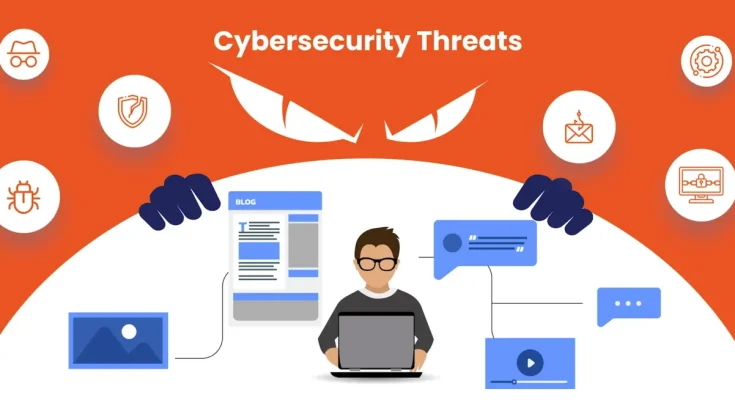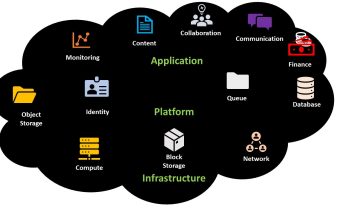JAKARTA, cssmayo.com – Cybersecurity Threats: are diverse and constantly changing. From small businesses to large corporations, everyone is at risk. Here are some of the most common types of cybersecurity threats that you should be aware of:
- Malware: Short for malicious software, malware includes viruses, worms, and trojans designed to damage or disrupt systems. I remember an incident at a previous job where a simple email attachment contained malware, leading to significant downtime and data loss.
- Phishing Attacks: These attacks involve tricking individuals into providing sensitive information, such as passwords or credit card numbers, by pretending to be a trustworthy source. I’ve received countless phishing emails that looked legitimate, but thankfully, I was cautious enough to avoid falling for them.
- Ransomware: This type of malware encrypts a victim’s files, rendering them inaccessible until a ransom is paid. Ransomware attacks have become alarmingly common, and organizations often find themselves in a tough spot when they’re hit.
- Denial-of-Service (DoS) Attacks: In these attacks, hackers overwhelm a system with traffic, causing it to slow down or crash. This can be particularly damaging for businesses that rely on their online presence.
- Insider Threats: Sometimes, the biggest threats come from within. Employees or contractors may intentionally or unintentionally compromise data security, making it crucial to have proper access controls in place.
My Experience with Cybersecurity Threats—Facing My First Breach

Let me share a story from my own experience. A few years ago, while working for a tech startup, we faced a serious cybersecurity threat. One of our team members clicked on a phishing link, which led to a malware infection. It was a wake-up call for us! We quickly realized that our cybersecurity measures were not robust enough.
This incident prompted us to take action. We implemented a comprehensive cybersecurity training program for all employees, focusing on identifying phishing attempts and understanding the importance of strong passwords. We also upgraded our security software and established clear protocols for reporting suspicious activities.
Practical Tips for Mitigating Cybersecurity Risks
Now that you understand the types of cybersecurity threats, here are some practical tips to help you mitigate these risks:
- Educate Your Team: One of the most effective ways to combat cybersecurity threats is through education. Conduct regular training sessions to keep your team informed about the latest threats and best practices for staying safe online.
- Implement Strong Password Policies: Encourage the use of strong, unique passwords and implement two-factor authentication (2FA) wherever possible. This adds an extra layer of security to your accounts.
- Regularly Update Software: Ensure that all software and systems are regularly updated to patch vulnerabilities. Cybercriminals often exploit outdated software, so staying current is essential.
- Backup Data: Regularly back up your data to a secure location. In the event of a ransomware attack or data loss, having backups can save you from significant headaches.
- Monitor Network Activity: Keep an eye on network activity for any unusual behavior. Implementing intrusion detection systems can help identify potential threats before they escalate.
- Establish Incident Response Plans: Prepare for the worst by having an incident response plan in place. This plan should outline steps to take in the event of a cybersecurity breach, including who to contact and how to mitigate damage.
Common Pitfalls to Avoid
While working on cybersecurity, here are some common pitfalls to be aware of:
- Underestimating Threats: Many organizations believe they are too small to be targeted by cybercriminals. This is a dangerous misconception. Cyberattacks can happen to anyone, regardless of size.
- Neglecting Employee Training: Failing to provide ongoing training can leave your team vulnerable to threats. Cybersecurity is a constantly evolving field, and continuous education is key.
- Ignoring Security Protocols: Ensure that all employees adhere to established security protocols. Neglecting these protocols can lead to vulnerabilities that cybercriminals can exploit.
Conclusion: Staying Ahead of Cybersecurity Threats
As we continue to embrace technology in our personal and professional lives, understanding and mitigating cybersecurity threats is more important than ever. My journey through the world of cybersecurity has taught me that proactive measures and continuous education are crucial in safeguarding our digital assets.
By implementing strong security practices, educating your team, and staying informed about the latest threats, you can significantly reduce your risk of falling victim to cyberattacks. Remember, cybersecurity is a shared responsibility, and together, we can create a safer digital environment.
So, let’s stay vigilant and protect ourselves from the ever-evolving landscape of cybersecurity threats. Happy securing!
Elevate Your Competence: Uncover Our Insights on Techno
Read Our Most Recent Article About Digital Literacy!




